The San Diego Museum of Art, like most of San Diego's museums, is along the Prado in Balboa Park, a huge complex of zoos, gardens, museums and more on a site that hosted a 1915 world fair to celebrate the opening of the Panama Canal and another twenty years later to kickstart the region's economy out of the depression.
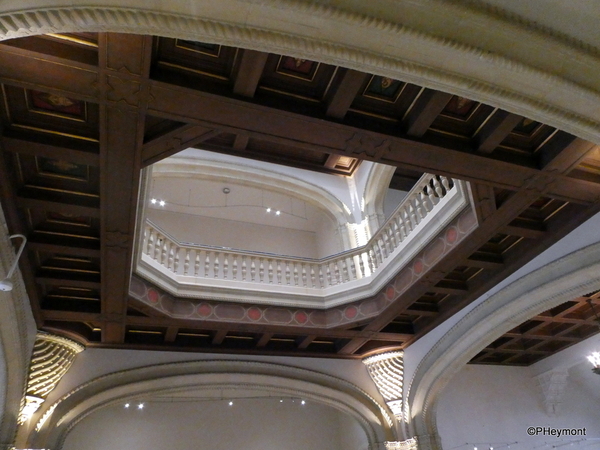
The two fairs created the wonderland of somewhat-Spanish sort-of-Aztec almost-classical buildings that house most of the attractions in what were originally fair pavilions. But the art museum's building was purpose-built, opening in 1926, halfway between the fairs. It's a building almost as interesting as its collections.
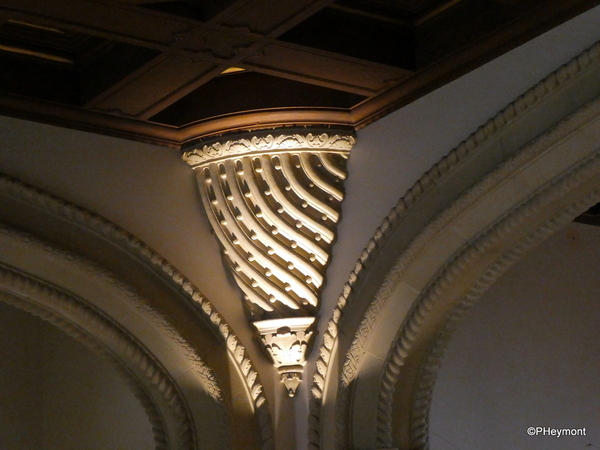
George G recognized the image above as our One-Clue Mystery this week.
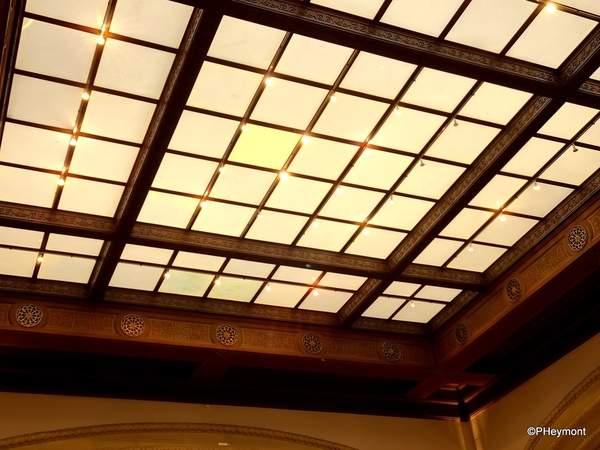
Its elements incorporate bits of all the styles seen in the other Prado buildings, but seems to me to be much more coherent than the others and less like an imitation of styles although it is, in fact, a pastiche of borrowings from Spain. The main doors are drawn from one at the University of Salamanca, the principal panels of the facade mirror the Cathedral of Valladolid and the interior draws on forms and details from the Santa Cruz Hospital of Toledo.
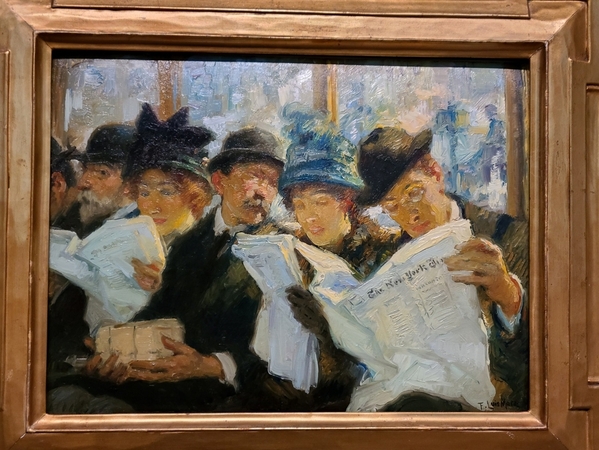
A personal favorite: Morning News, by Uraguayan-American impressionist Francis Luis Mora. I liked it enough to buy a print...now I have to find space.
Behind its massive facade, the museum is actually smaller than you might imagine for the nation's eighth-largest city, and its collection of a bit over 4,000 objects doesn't rank very high, but it is strong in its focus areas, including Spanish 'old masters.'
Two interesting pieces by Diego Rivera caught my attention; I've seen reproductions of the Hands of Dr. Moore, painted in the 1940s before, but the 1918 Aqueduct, painted during his years in France, was an interesting surprise.
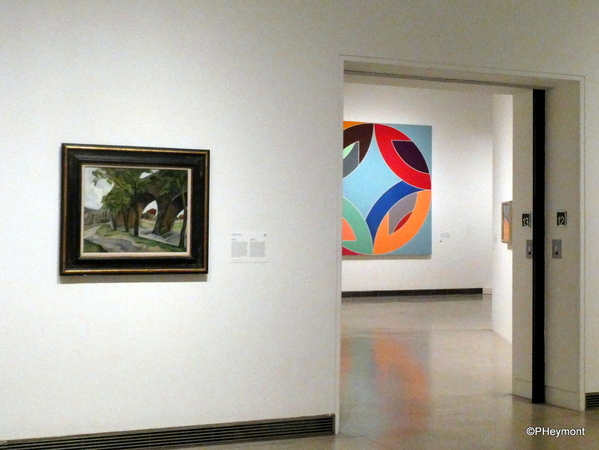
Contrast between the two rooms caught my attention
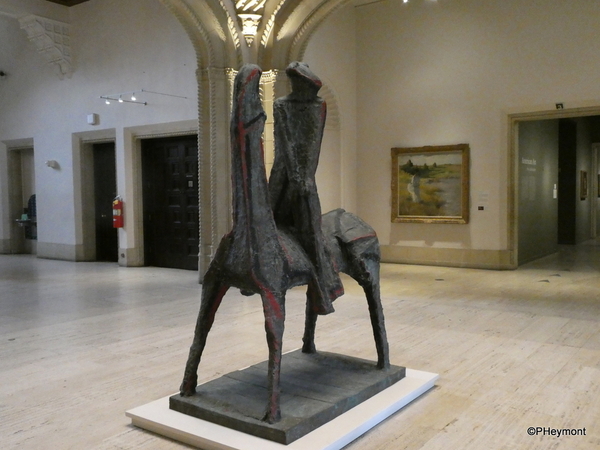
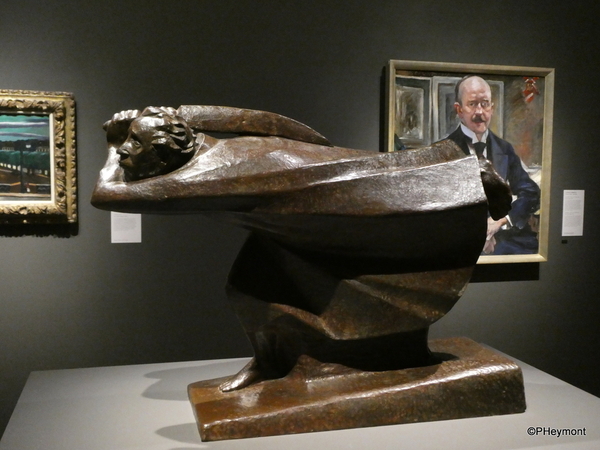 Two striking sculptures: Idea for the Rider, by Marino Marini, and The Avenger a 1922 work by Ernst Barlach. The form of the piece seemed to contrast with Barlach's commitment to pacifism after his experiences in World War I.
Two striking sculptures: Idea for the Rider, by Marino Marini, and The Avenger a 1922 work by Ernst Barlach. The form of the piece seemed to contrast with Barlach's commitment to pacifism after his experiences in World War I.
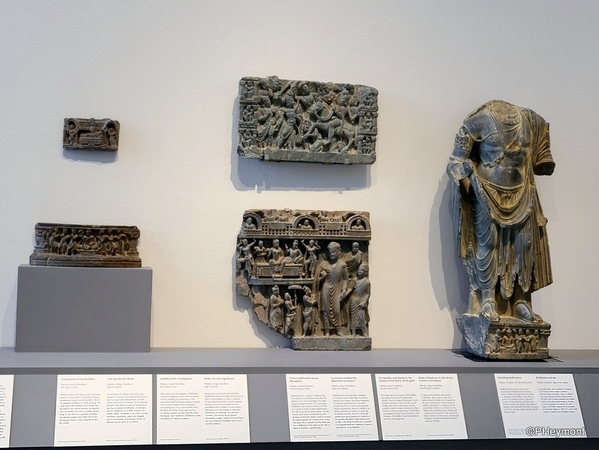
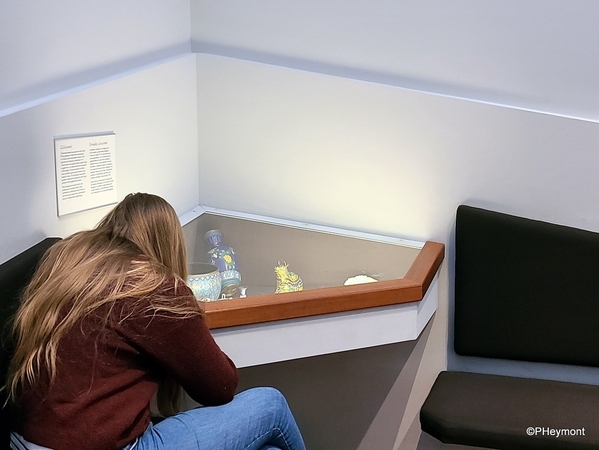
Clever use of corner space made it easy to look closely at small objects
The museum has its share of classical pieces and fragments (above) but is much stronger in its Asian collections such as this Japanese 'spirit house,' a portable Shinto shrine made for a member of Japan's ruling dynasty about two hundred years ago.
A current exhibition with a clever title focuses on depictions of elephants in the art of India and on the roles elephants played in Indian life.
Francisco de Zurbaran, the 17th-century painter some have called 'the Spanish Caravaggio' is noted for his religious paintings, such as this Virgin and Child with John the Baptist. For all his seriousness, though, he apparently had a sense of humor—look at his signature at the bottom left of the picture.

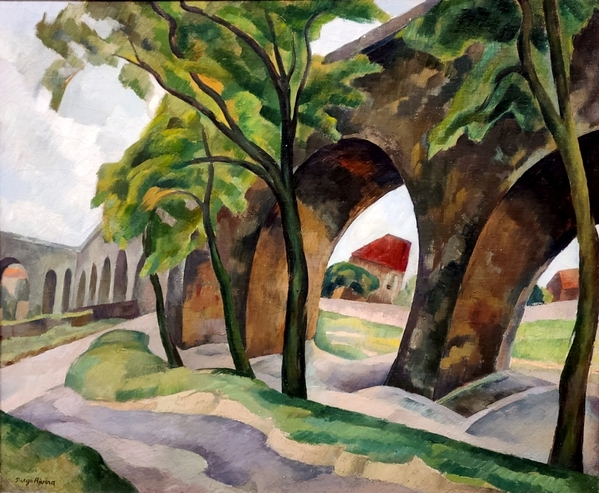
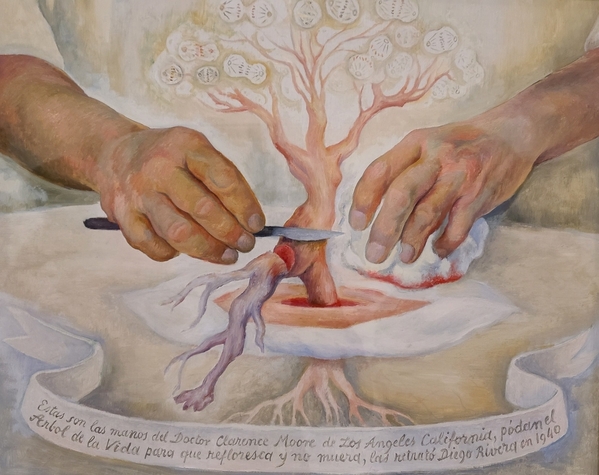
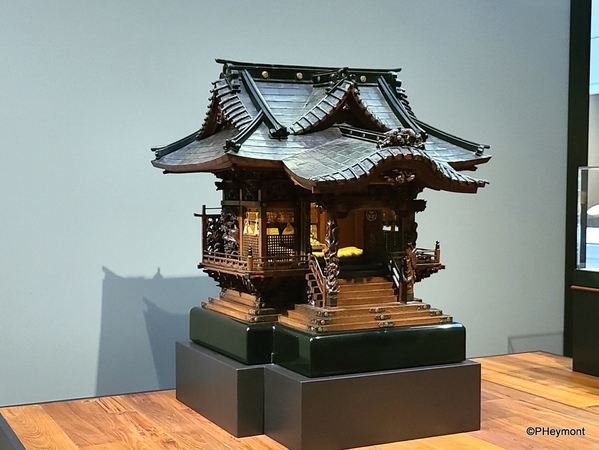
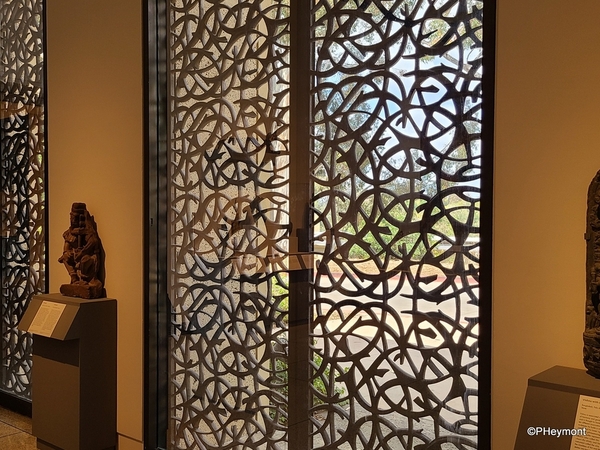
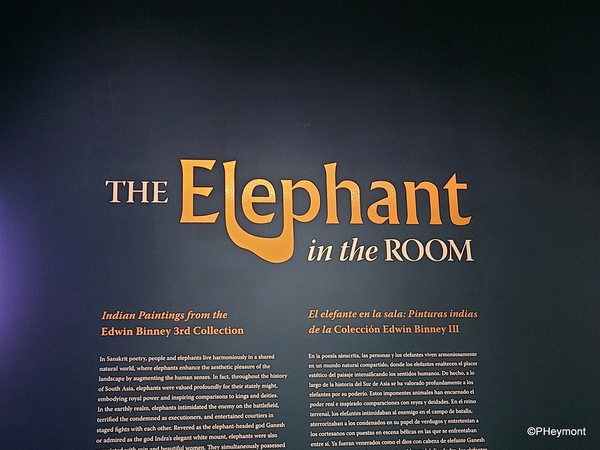
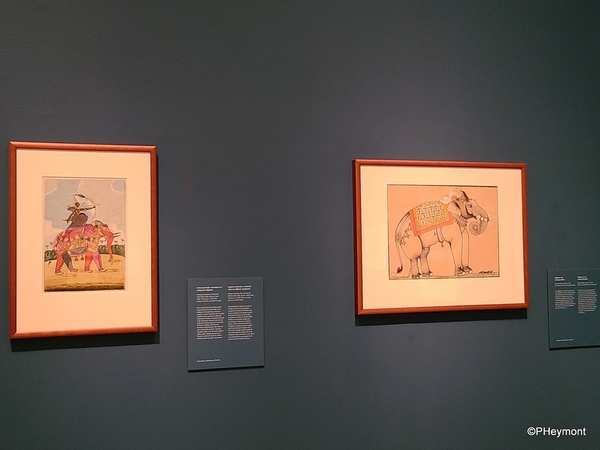
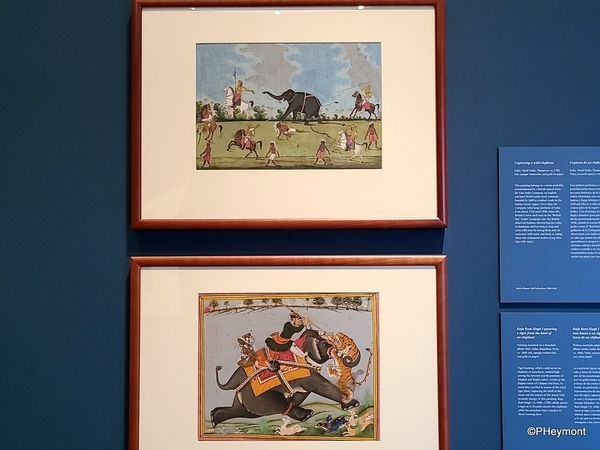
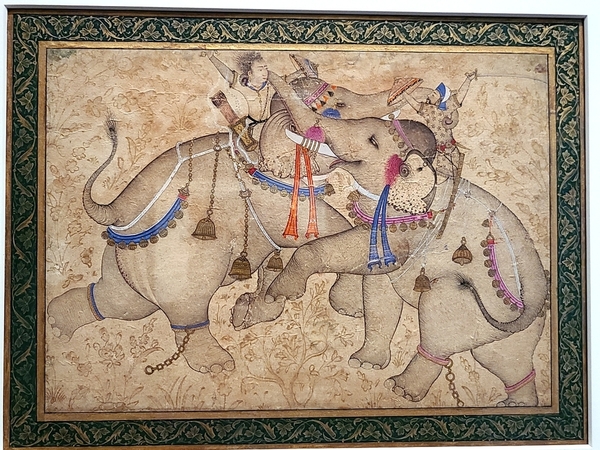
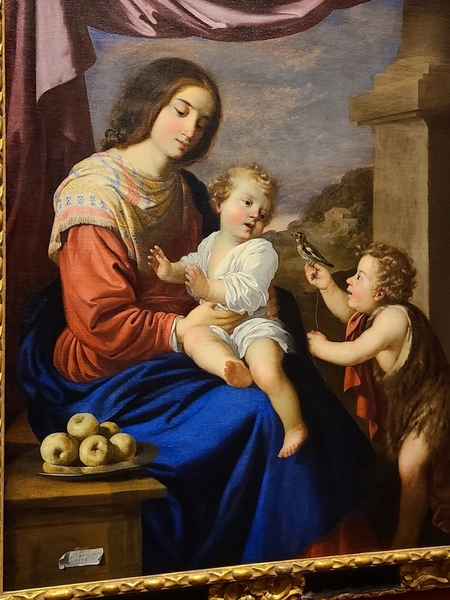
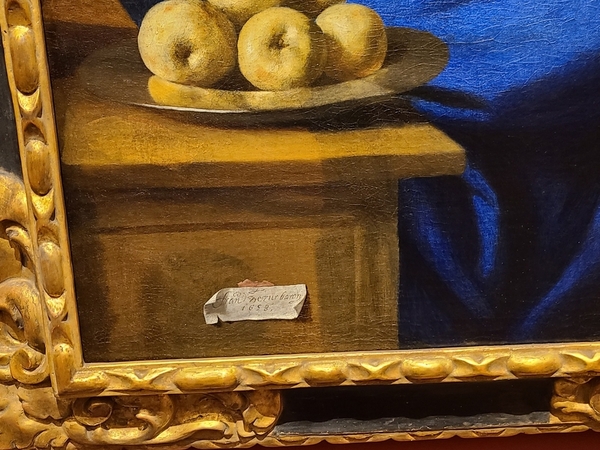
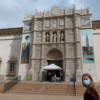

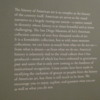

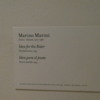


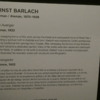

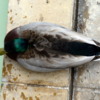
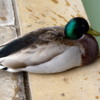
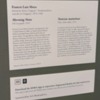


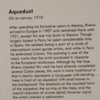

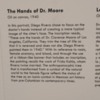






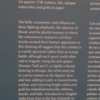

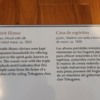



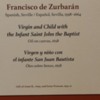







Comments (0)